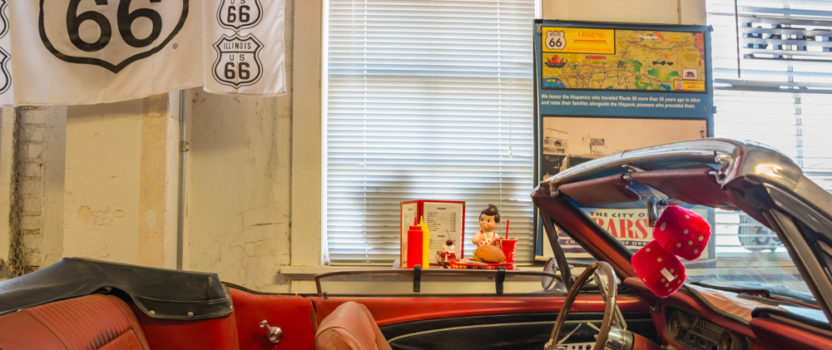2. Mother Road Museum, Barstow, California
Just as the earth has many geologic layers that record and reveal the evolution of the earth, so too does Route 66, perhaps especially in the Southwest, where its identity has refused to be completely covered by strata on top. Today, a trip down Historic Route 66 in the Southwest involves more than a historic look at its past glory. It also involves looking at a mixture of all the layers, including those that came before and those that have come after. Before Route 66, we of course had wagon roads, railroads, and auto trails. The railroad era began in the 1880s, the automobile by the 1920s.
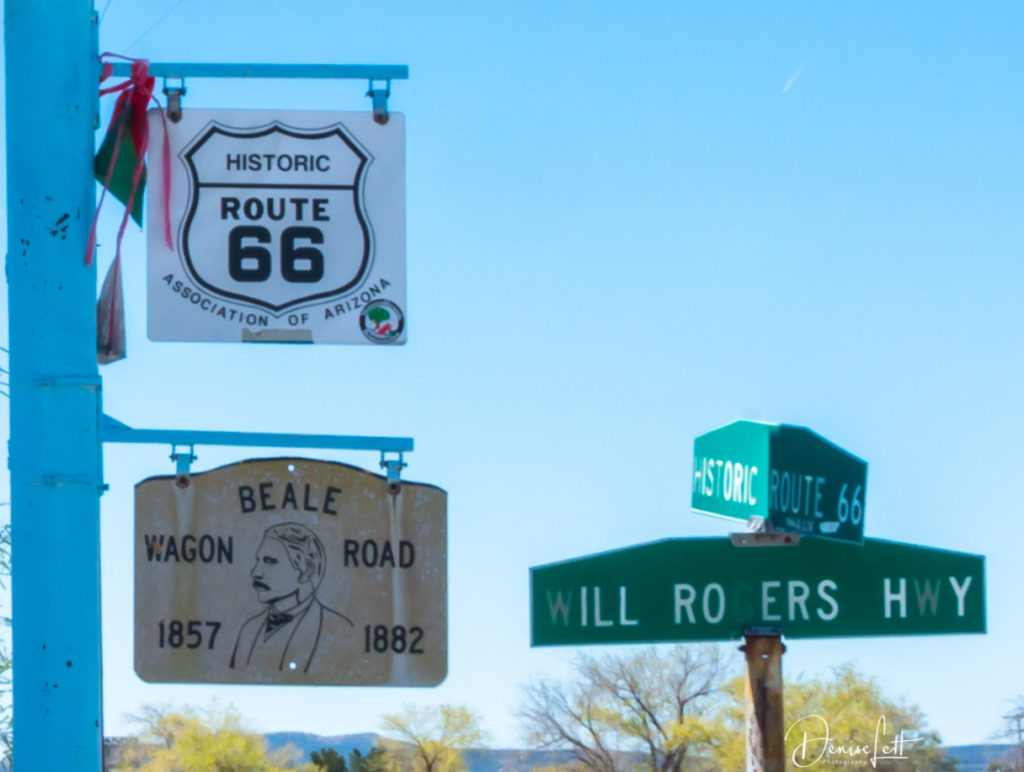

Route 66 was commissioned in 1926 and in many parts either shadowed the railroad and/or subsumed wagon or auto trails laid before. The history of the towns found along Route 66 in the Southwest are inextricably linked to the railroad as most of these towns originated to service it. So it is difficult to ignore the role of the railway system and its related architecture when exploring Route 66 in the Southwest today. And so it is not inappropriate to begin our journey at a railroad depot:
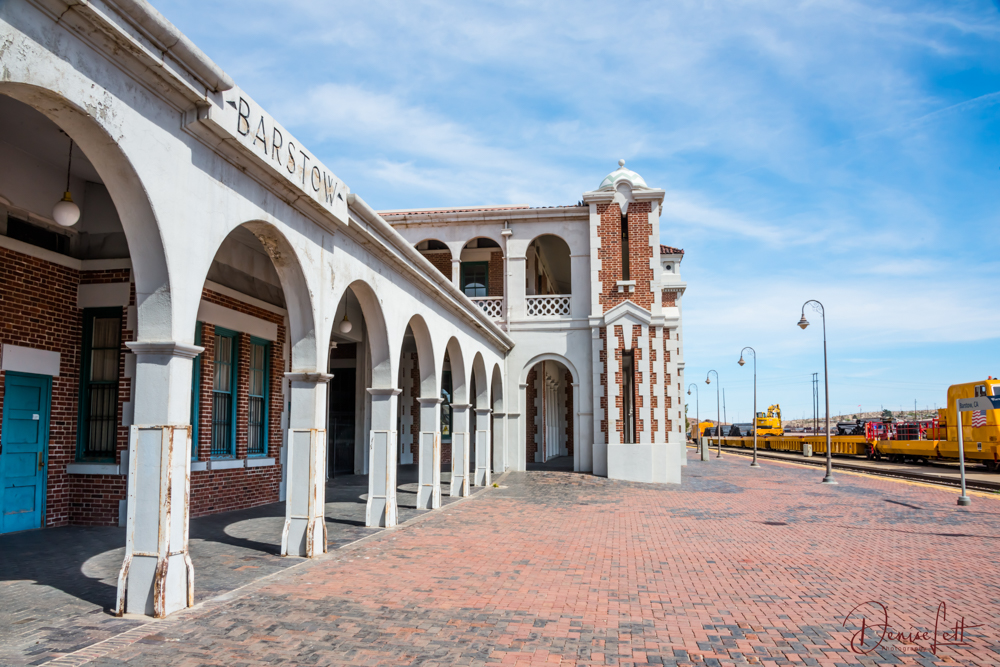
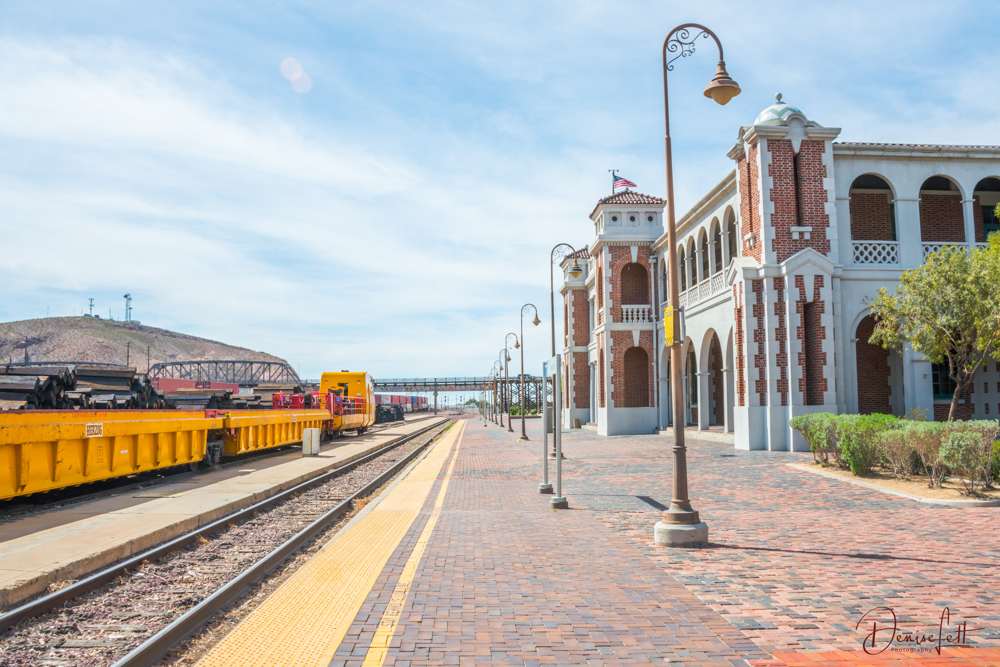
“You want me to put a museum in here?”
That, Bill Tomlison told me, was his reaction when asked in 1999 to help set up a Route 66 museum in the former laundry room of the long-deserted railroad depot hotel Casa del Desierto, or “House of the Desert,” in Barstow, California. By then, the laundry room in the back of the building had long been used as a dump, filled to the ceiling with cracked cement and brick debris from demolition of other parts of the property.

How did the laundry room of this stately structure reach such a wretched state, I wondered. To help address this question, Bill Tomlison recommended the book Barstow: Depots & Harvey Houses by Germaine Moon, which I purchased on the spot from the Route 66 Mother Road Museum’s impressive collection of literature on Route 66 and on cars. As near as I can tell, the story line of Casa del Desierto is a familiar one in the annals of the grand railroad depot hotels built during the heyday of rail travel in the early 20th century. In the end, though, not all enjoyed the same fortune of survival over destruction as the Casa del Desierto.
When the Casa del Desierto opened for business in 1911 by the Atchinson, Topeka, and Santa Fe Railway Company, travel by rail was the rule of the day.

The commissioning of U.S. Highway 66 between Chicago and Los Angeles, to largely parallel the railroad in the Southwest, would not occur for another 15 years after the Casa del Desierto opened for business, and it would be another dozen before all of this Mother Road would be paved. The Casa del Desierto thus for many years remained an exclusive elegant edifice here in the middle of the Mojave Desert. This combination railroad depot, hotel, and restaurant complex was built by the Santa Fe Company but managed, as were all of the Santa Fe Company’s hospitality facilities, by the Fred Harvey Company, legendary for its unsurpassed standard of luxury lodging, fine dining, and chauffeured tours for the traveler.
By the 1940s, however, travel by train in general declined as that by plane and private car climbed. In 1970, Congress passed an act to create Amtrak, a national rail system dedicated to passenger service, in an effort to revive passenger travel by rail. Within two years, the Santa Fe Company abandoned its own passenger service, though the company continued to occupy the Casa del Desierto property until 1976.
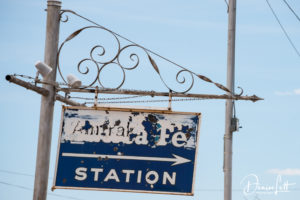
A movement to save this Barstow Harvey House began in the 1980s when the Santa Fe Company announced its intentions to destroy the Casa del Desierto. The city of Barstow acquired the long-vacated property by the early 1990s, and the Mother Road Museum opened in the building in 2000.
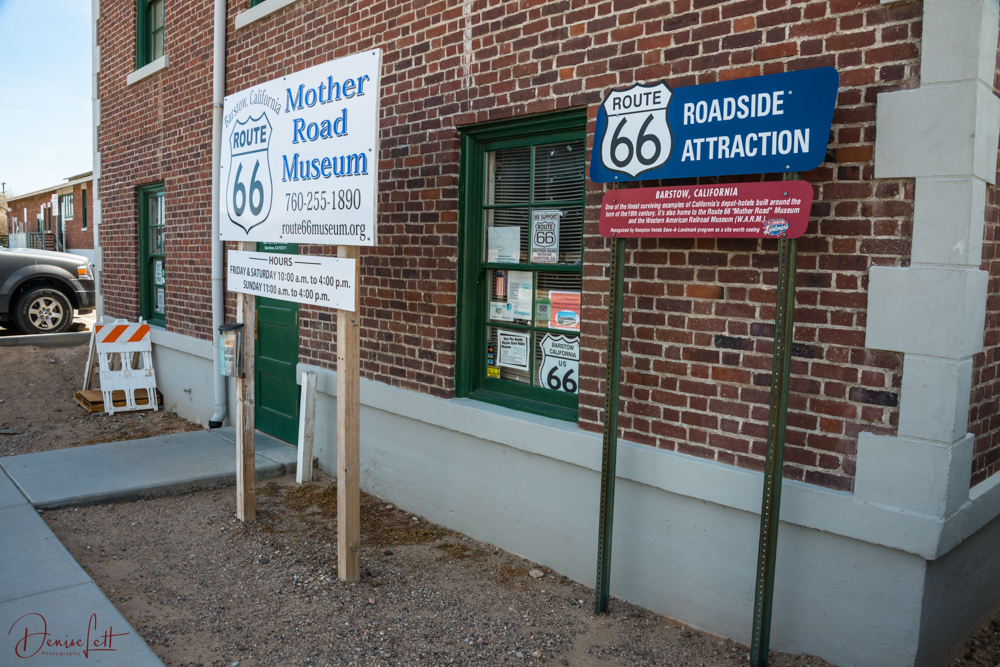
Bill Tomlison and his wife, LaVella, who also had a hand in bringing the museum to life, just happened to be the docents manning the museum that Sunday of our visit. “We’re here every Sunday,” Bill remarked in case we were back in the area. All who work at the museum are volunteers, he added.

The Mother Road Museum turned out to be a great place to begin my husband’s and my Route 66 road trip in America’s Southwest. The black 1915 Model T Touring car, the red mustang convertible with the Big Boy’s drive-in food tray hanging on the driver’s rolled-down window, a map of Route 66 mounted on the wall, and displays of vintage photographs and other memorabilia dedicated to the early days of auto travel provided the historical framework and frame of mind for following in the tire tracks of so many before on a road trip down America’s Mother Road, Route 66.
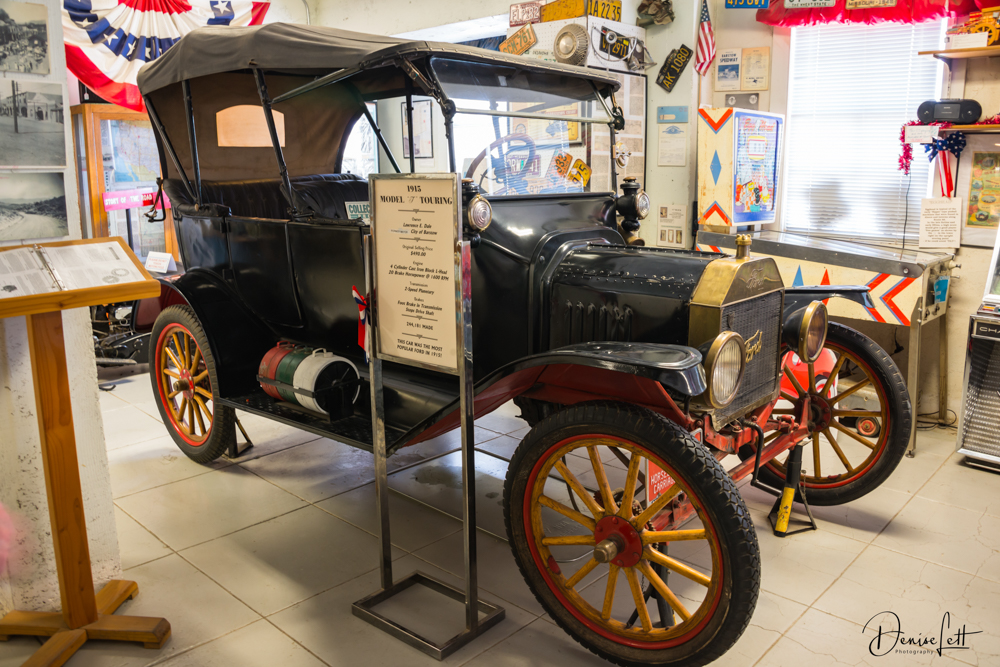
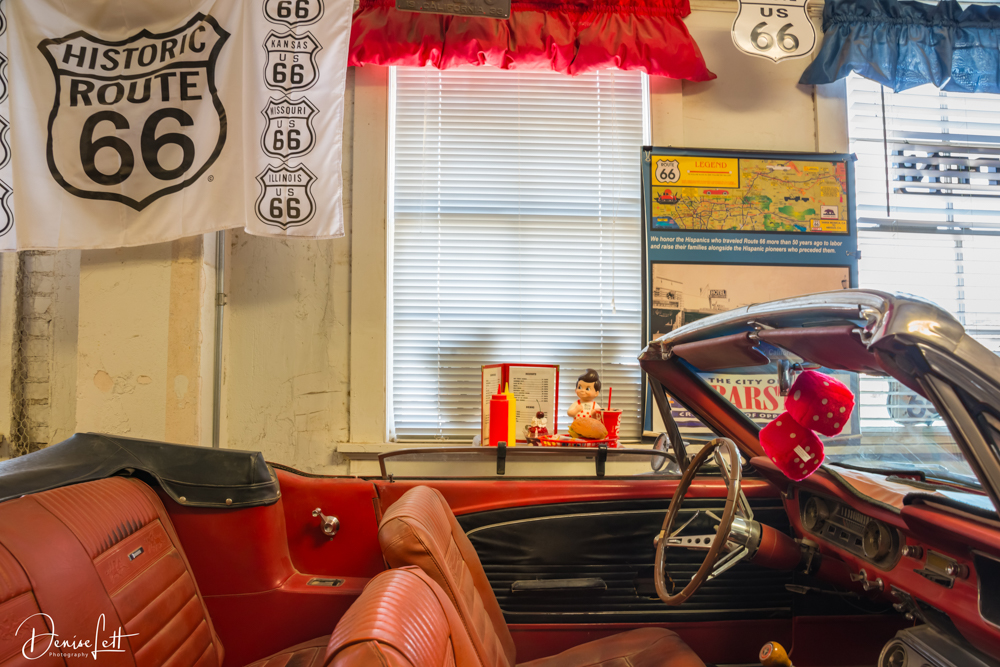
“Did you get a round bed?” Bill Tomlison inquired when I told him that we were staying at Barstow’s Route 66 Motel. It was the owner of the motel who recommended we visit the museum first and said to say “Hi!” to Bill and LaVella. As it turns out, the owner of the motel, Ved Shandil, had also been involved in the museum’s emergence, but then needed to refocus his time on the business of running his motel.

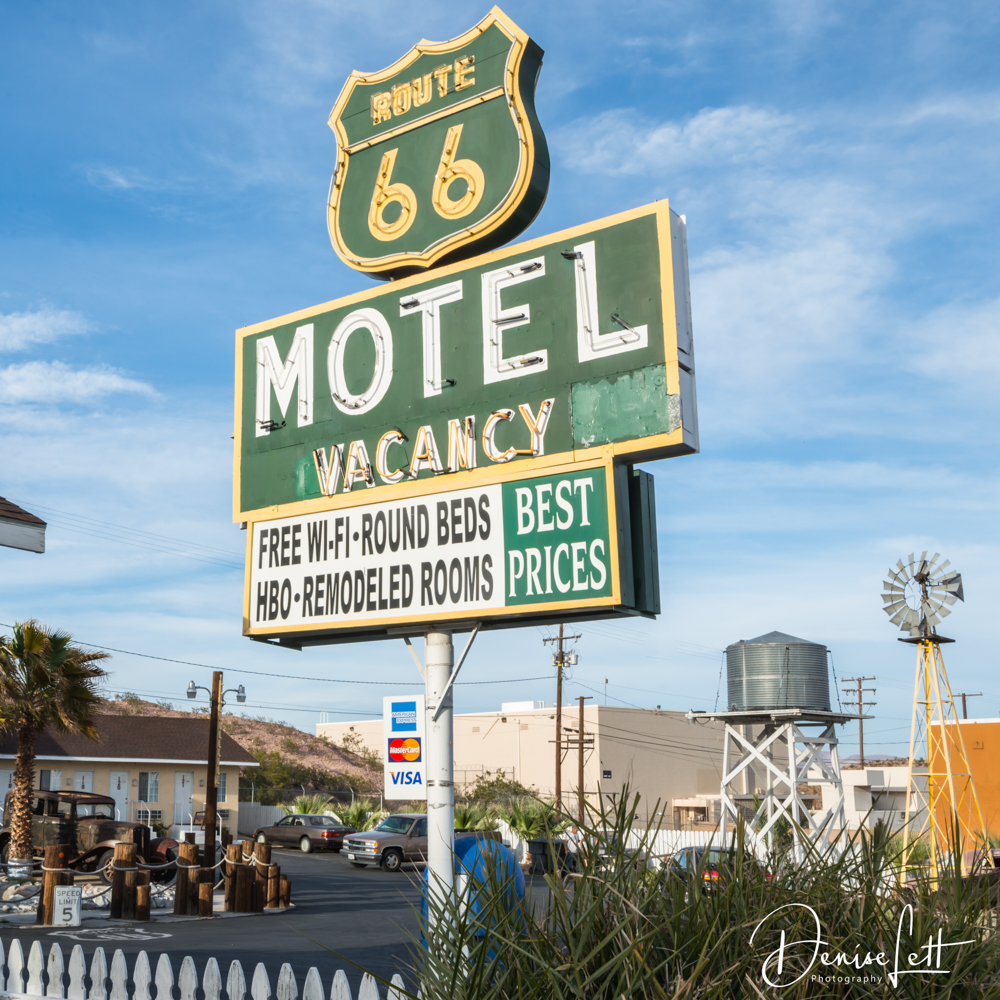
Though the motel roadside sign advertised them, I had completely forgotten about the round beds! I would have to see what I could do about that when I returned to the motel….
(To be continued….) Subscribe to my Blog at the very bottom of the page!
COPYRIGHTED MATERIAL

